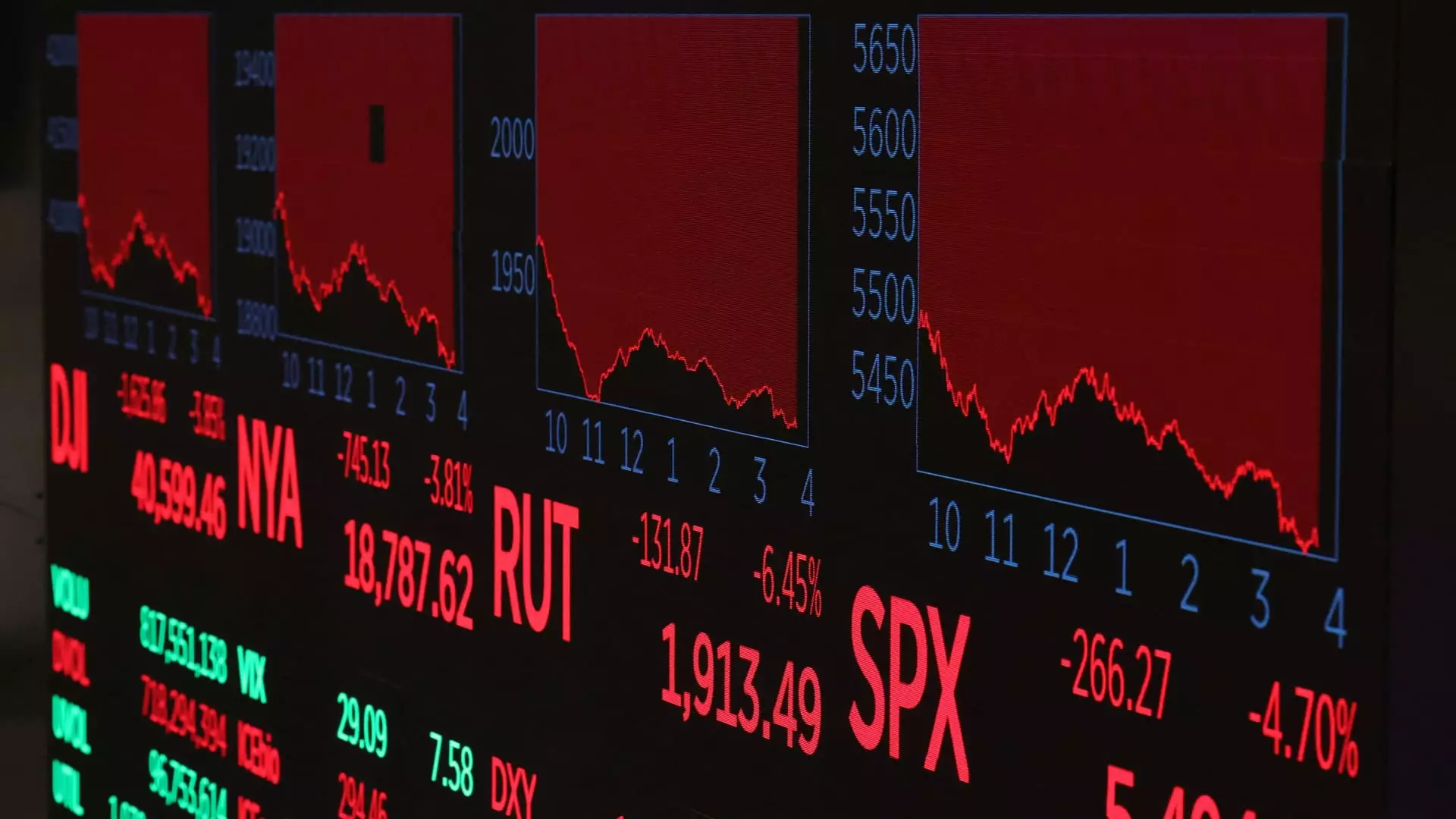In the chaotic world of finance, where daily headlines can drive emotional responses, the behavior of retail investors remains a fascinating phenomenon. As concerns over President Trump’s recently revised tariff plan sent Wall Street into a frenzy of anxiety, everyday investors like Rachel Hazit made a bold counter-move, diving into the market headfirst. With a cash reserve ready for action, Hazit and many others saw not impending doom, but rather opportunity amidst the storm. It raises an intriguing question: What compels these individuals to invest when conventional wisdom suggests a retreat?
The Concept of “Buying the Dip”
At the heart of this retail investor movement is the well-known strategy of “buying the dip.” This principle rests on the belief that purchasing stocks during periods of decline allows investors to acquire assets at a discount, paving the way for potential profits when the market rebounds. Hazit exemplifies this mindset; rather than viewing the market downturn as a signal to flee, she interpreted it as a sale in the stock market. This contrarian attitude illustrates a critical divergence between retail and institutional investors. While many institutional players were quick to curtail their holdings amidst rising fears of a recession, retail investors continued to pour money into the market.
Vanda Research, a firm that analyzes retail investor behavior, corroborates this trend with eye-opening data. On April 3, when the S&P 500 faced a sharp decline post-Trump’s initial tariff announcement, retail investors funneled over $3 billion into U.S. stocks. This marked a record daily net inflow, showcasing a level of confidence and resolve that starkly contrasts with the fear gripping institutional players.
The Power of Long-Term Thinking
What propels retail investors like Hazit and others to adopt a long-term perspective in an uncertain market environment? Many of them have learned from experience that the best time to invest often coincides with market instability. Namaan Mian, another retail investor, exemplifies this through his well-refined investment strategy. Having begun investing as a teenager, he prioritizes a long-term approach that transcends daily market fluctuations. This mentality—detaching emotion from trading—enables him to weather short-term volatility while remaining focused on long-term gains.
Investors often overlook the long-term growth potential of equities, especially when the market displays fluctuation. Hazit’s calculated decision to purchase shares of established ETFs like the Vanguard S&P 500 reflects her belief in the resilience of the broader market. Such diversification not only mitigates risk but symbolizes a level of strategic thinking often absent among day traders or those who surrender to panic during market downturns.
The Influence of Social Sentiment and Digital Communities
In an era marked by social media and digital communication, the influence of online communities cannot be underestimated. Investing-focused influencers and platforms have emerged as guiding lights, reminding novice investors of the age-old adage: “Millionaires are made during market downturns.” Figures like Tori Dunlap actively engage in educating a diverse audience, with an emphasis on nurturing financial literacy among marginalized groups. This shift in strategy and sentiment is crucial; it empowers individuals to act rather than react.
However, it’s imperative to acknowledge that not all retail investors are bullish in the face of troubling economic signals. There are voices of caution amidst the optimism; some are understandably wary about using their disposable income to invest given the potential ramifications of economic downturns, such as rising inflation and reduced consumer spending power. Hazit’s fears about how tariffs impact her future financial choices underline the balancing act that many investors must perform between optimism and realism.
Immediate Impacts of Tariff Policy on Consumer Sentiment
Tariff policies, particularly those rooted in populist rhetoric, have far-reaching implications that directly affect everyday consumers. As Hazit pointed out, the price increases in consumer goods resulting from Trump’s tariffs directly impact her future purchasing decisions. This link between macroeconomic policies and retail sentiment cannot be ignored. While Hazit invests despite fears, the overarching economic landscape creates a collective anxiety, posing the question of whether investment actions are merely symbolic, or if they genuinely indicate a belief in a brighter economic horizon.
The volatility observed in indices such as the CBOE Volatility Index (VIX) highlights the lingering uncertainty. As these emotional market signals ripple through the industry, retail investors find themselves at a crossroads between cautious optimism and anxious indulgence.
As the market continues to evolve in response to political maneuvering, retail investors are demonstrating resilience and resolve in their strategies. This commitment to invest—spurred by a combination of historical perspective, community influence, and a long-term approach—offers a powerful alternative to fear-driven selling. In this climate of uncertainty, one can only wonder about the future trajectories of both retail investors and broader market trends as they navigate this complex landscape.

